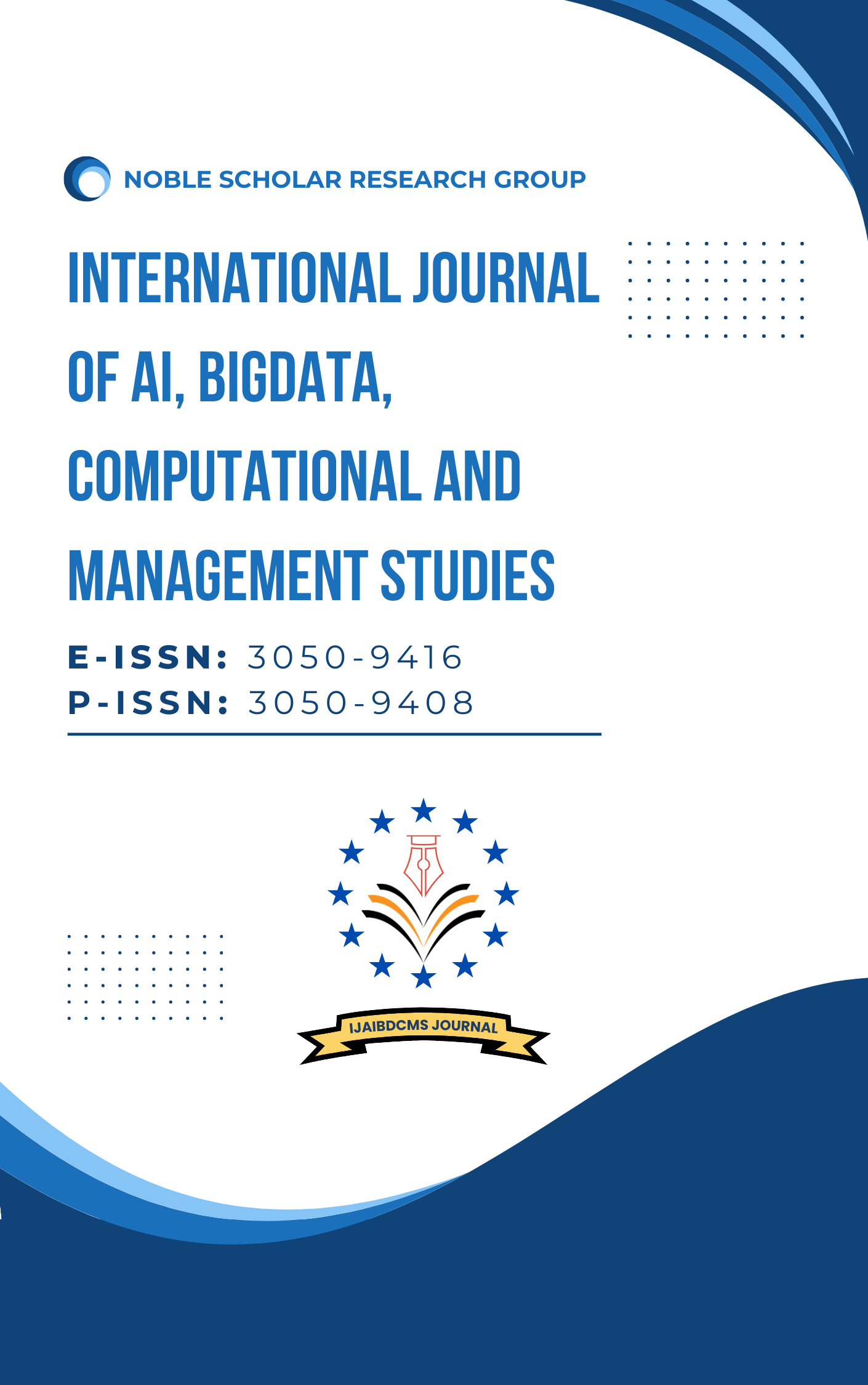Data-Driven Cybersecurity: AI-Based Predictive Models for Threat Intelligence and Risk Mitigation
DOI:
https://doi.org/10.63282/3050-9416.IJAIBDCMS-V3I1P103Keywords:
AI in cybersecurity, machine learning, deep learning, threat detection, adversarial attacks, data privacy, interpretability, anomaly detection, hybrid AI-human systems, risk managementAbstract
In the rapidly evolving landscape of cybersecurity, traditional methods of threat detection and risk management are increasingly inadequate to address the sophisticated and dynamic nature of cyber threats. The advent of artificial intelligence (AI) and machine learning (ML) has opened new avenues for enhancing cybersecurity through data-driven approaches. This paper explores the application of AI-based predictive models in threat intelligence and risk mitigation. We discuss the theoretical foundations, methodologies, and practical implementations of these models, highlighting their effectiveness in identifying and mitigating cyber threats. The paper also examines the challenges and future directions in this field, providing insights for researchers, practitioners, and policymakers
References
1. Goodfellow, I., Bengio, Y., & Courville, A. (2016). Deep Learning. MIT Press.
2. Russell, S., & Norvig, P. (2016). Artificial Intelligence: A Modern Approach (3rd ed.). Pearson.
3. Chen, Y., & Zhu, J. (2019). Machine Learning in Cybersecurity: A Comprehensive Review. IEEE Transactions on Information Forensics and Security, 14(8), 2019-2035.
4. Liu, Y., & Wang, Y. (2020). Deep Learning for Network Intrusion Detection: A Survey. Journal of Network and Computer Applications, 157, 102547.
5. Bertino, E., & Islam, N. (2018). Big Data Analytics for Cybersecurity. IEEE Security & Privacy, 16(3), 14-22.
6. Zhang, J., & Wang, X. (2021). Adversarial Machine Learning in Cybersecurity: A Survey. IEEE Transactions on Dependable and Secure Computing, 18(3), 1123-1138.
7. Kumar, M., & Bajaj, V. (2020). Natural Language Processing for Cyber Threat Intelligence: A Review. Computers & Security, 94, 101916.
8. Kotenko, I., & Skormin, V. (2019). Data-Driven Approaches to Cybersecurity: A Survey. ACM Computing Surveys, 52(4), 1-35.
9. Liu, Y., & Li, X. (2021). Interpretable Machine Learning in Cybersecurity: Challenges and Opportunities. IEEE Transactions on Neural Networks and Learning Systems, 32(6), 2341-2353.
10. Shah, S., & Kulkarni, S. (2020). Ethical Considerations in AI-Driven Cybersecurity. Journal of Cybersecurity, 6(1), 1-14.
11. Predictive analytics in cybersecurity using AI. Insights2TechInfo. https://insights2techinfo.com/predictive-analytics-incybersecurity-using-ai/
12. Title of the article. International Journal of Multidisciplinary Engineering Science and Development (IJMESD). https://ijsdcs.com/index.php/IJMESD/article/view/590
13. Artificial intelligence in cybersecurity. Balbix. https://www.balbix.com/insights/artificial-intelligence-in-cybersecurity/
14. International Journal of Multidisciplinary Engineering Science and Development (IJMESD). https://ijsdcs.com/index.php/IJMESD/article/download/590/228
15. Predictions of artificial intelligence (AI) in cybersecurity. Palo Alto Networks. https://www.paloaltonetworks.com/cyberpedia/predictions-of-artificial-intelligence-ai-in-cybersecurity
16. AI in developing predictive models for cyber threats. AllStarsIT. https://www.allstarsit.com/blog/ai-in-developingpredictive-models-for-cyber-threats
17. AI and cybersecurity. IBM. https://www.ibm.com/ai-cybersecurity
18. Cyber threat intelligence: AI-based predictive analysis for proactive security measures. ResearchGate. https://www.researchgate.net/publication/388634635_Cyber_Threat_Intelligence_AIBased_Predictive_Analysis_for_Proactive_Security_Measures



